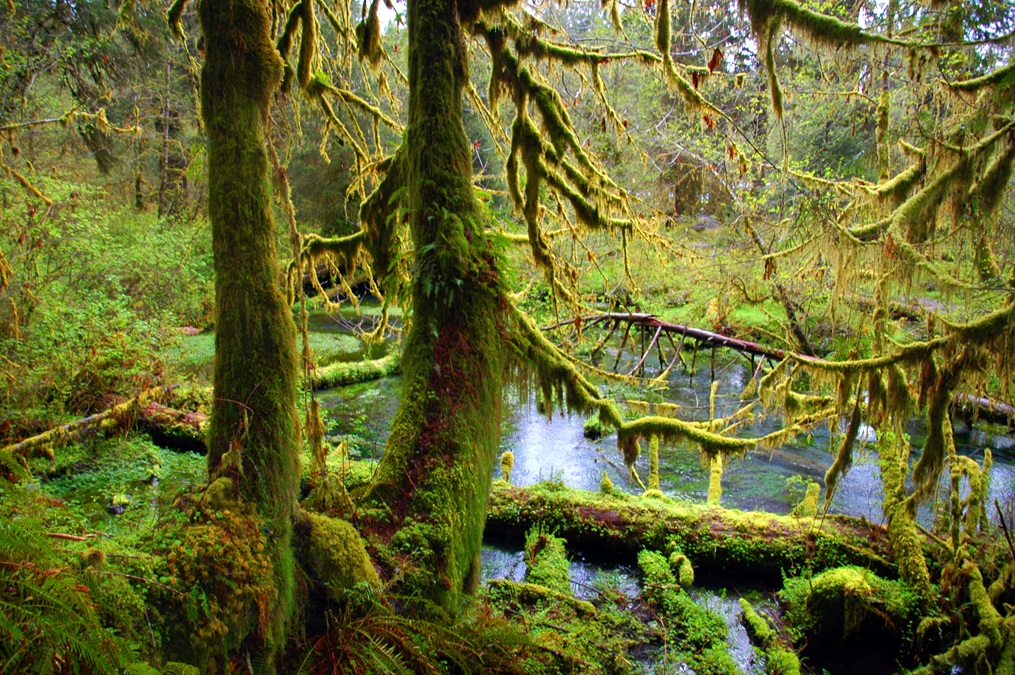Fly to the national parks: Northwest
You’ll find big trees, pristine lakes, rugged mountains, and endless beauty in all these Northwestern parks.
Glacier National Park, Montana: Characterized by snowcapped peaks, forested valleys, blue-green glacial lakes, and dynamic wildlife, Glacier National Park reveals a stunning landscape sculpted by glaciers, about 25 of which still persist at the higher elevations. Incoming pilots have three airports to choose from. Kalispell is a convenient gateway town, and Kalispell City Airport has a motel and upscale hotel nearby. Glacier Park International Airport offers a longer runway if density altitude is a concern, but lacks adjacent hotels. Ryan Field, near West Glacier, is a beautiful grass field with camping facilities and transportation options (see this article for more on Ryan Field). From West Glacier you’ll first come to beautiful Lake McDonald, where you can fish, hike, or take a boat tour. More accommodations and restaurants are available near Swiftcurrent Lake on the park’s east side.

Olympic National Park, Washington: Fly to Port Angeles to access this enormous park that occupies the center of the Olympic Peninsula. Most areas outside the park have been logged, and those trees look like kindling compared to the old-growth giants inside the park. You’ll drive counter-clockwise around the park’s edge and head in to see the highlights: Drive up Hurricane Ridge for panoramic views. Explore the restored Elwha River, flowing freely and hosting salmon again after the removal of two dams. Kayak beautiful Crescent Lake and enjoy its adjacent lodge and waterfall. See more waterfalls and huge fir, cedar, and spruce on easy hikes from Sol Duc Hot Springs Resort. Do not miss the Hoh Rain Forest and its Hall of Mosses Trail. Other trails lead deeper into the park’s primeval virgin forest. Then continue south to see wild beaches, stay at the romantic Kalaloch Lodge, and finish at the Quinault Rain Forest.

Mount Rainier National Park, Washington: The 14,411-foot stratovolcano Mount Rainier is the highest point in the Cascade Range and centerpiece of this park, 97 percent of which is wilderness. Consequently, there are no nearby airports with rental cars: Choose from Yakima to the east, Chehalis to the west, or Pierce Co. to the northwest. The volcano receives enormous amounts of rain and snow each year, has over 25 glaciers, and is popular for mountaineering. Visitors also flock to Paradise, Longmire, and Sunrise, which have inns. There are also three car campgrounds or you can camp in the backcountry.
Crater Lake National Park, Oregon: With no inlets or tributaries, Crater Lake has some of the purest water in the world. Of course you’ll stop at one of the lookout points on the 33-mile Rim Drive and stand in awe at this sapphire jewel. Then be one of the few who hike down the 1.1-mile Cleetwood Cove Trail, on the lake’s north side, where you can take the boat to Wizard Island or go fishing. In summer, stay at the historic Crater Lake Lodge and enjoy fine dining and stellar views, or camp year-round. Klamath Falls, a one-hour drive, is the closest airport with rental cars.



















